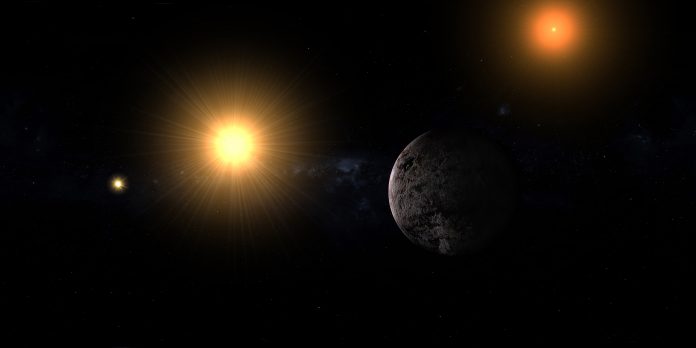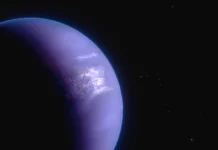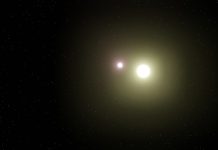Astronomers from Germany and Switzerland have revealed evidence of how the gap in the size distribution of exoplanets, particularly those around two Earth radii emerges
Their findings, published in Nature Astronomy, reveal how the migration of icy sub-Neptunes within planetary systems could be the key to understanding this enigmatic mystery.
Shortage of exoplanets with sizes around two Earth radii
Lead author Remo Burn, an exoplanet researcher at the Max Planck Institute for Astronomy (MPIA) in Heidelberg, explains, “Six years ago, a reanalysis of data from the Kepler space telescope highlighted a shortage of exoplanets with sizes around two Earth radii. Our study, along with other research groups, predicted the existence of such a gap even before this observation.”
The gap has previously been explained as the loss of atmosphere due to irradiation from the central star.
Christoph Mordasini, a co-author from the University of Bern, added, “In fact, we — like other research groups — predicted based on our calculations, even before this observation, that such a gap must exist,” These sub-Neptunes, slightly larger than super-Earths, have extended atmospheres and are thought to originate from icy regions within their planetary systems.
Icy regions
Julia Venturini from Geneva University, who led a previous study on the subject, elaborates, “Based on simulations we already published in 2020, the latest results indicate and confirm that instead, the evolution of sub-Neptunes after their birth significantly contributes to the observed radius valley,”
The study utilised advanced physical models to simulate planet formation and evolution, assessing factors such as gas and dust disks surrounding young stars, atmospheric emergence, and radial migration.
Despite the close alignment between simulated and observed size distributions, there are still differences. Too many ice planets end up near the central star in the calculations.
Insights from the James Webb telescope
However, researchers view this as an opportunity to deepen their understanding of planetary migration. Looking forward, observations from telescopes like the James Webb Space Telescope (JWST) and the Extremely Large Telescope (ELT) could validate these simulations.
These telescopes could provide insights into the composition of exoplanets based on their size, offering a crucial test for the models proposed in this study.
Christoph Mordasini imagines, “If we were to expand our results to cooler regions, where water is liquid, this might suggest the existence of water worlds with deep oceans,”
“Such planets could potentially host life and would be relatively straightforward targets for searching for biomarkers thanks to their size.”
Editor's Recommended Articles
-
Must Read >> Space exploration and the nature of the divine
-
Must Read >> Space breakthrough: Mars immigration advancements














